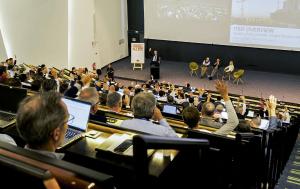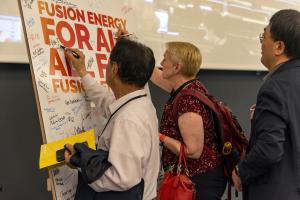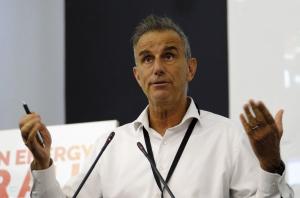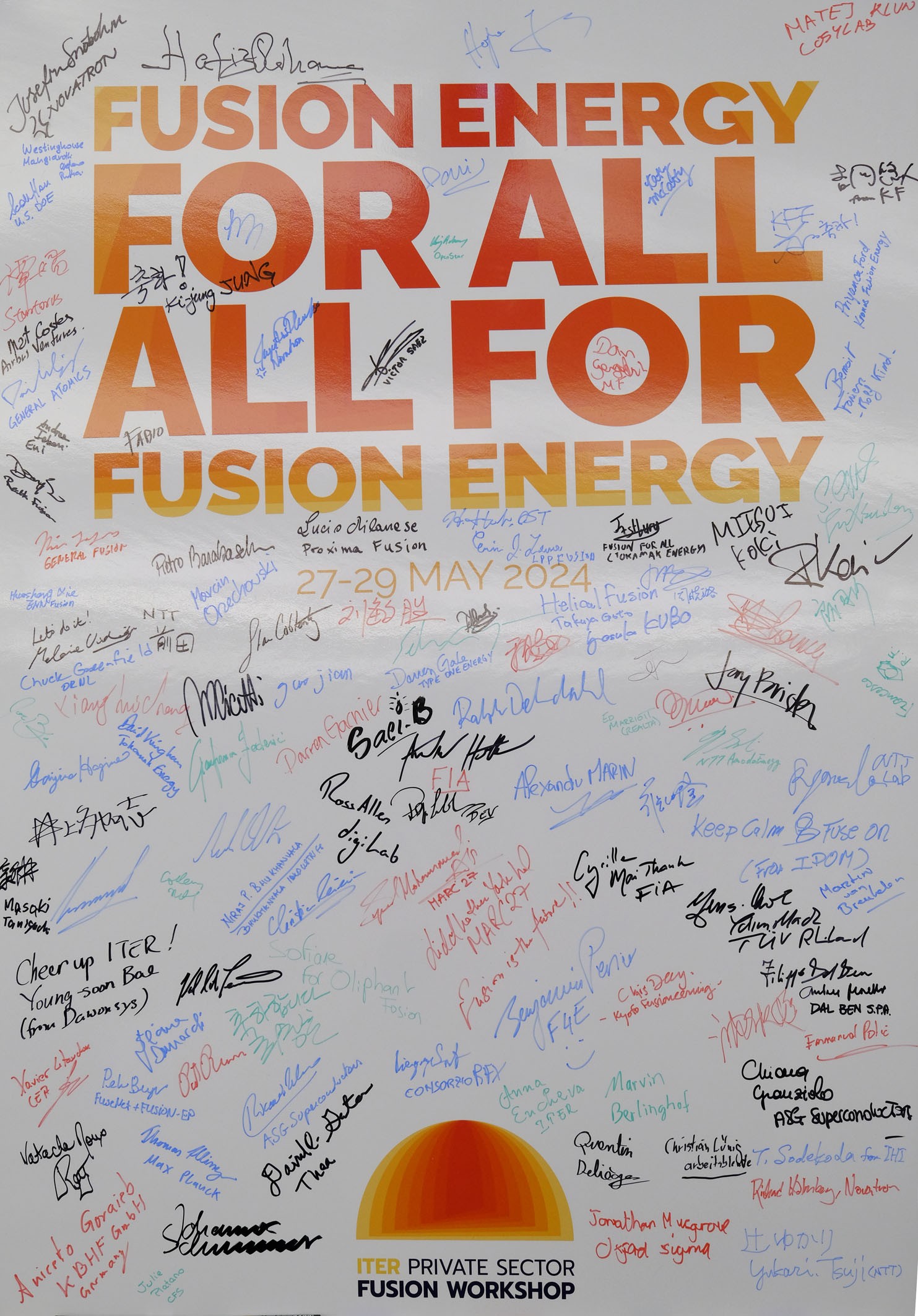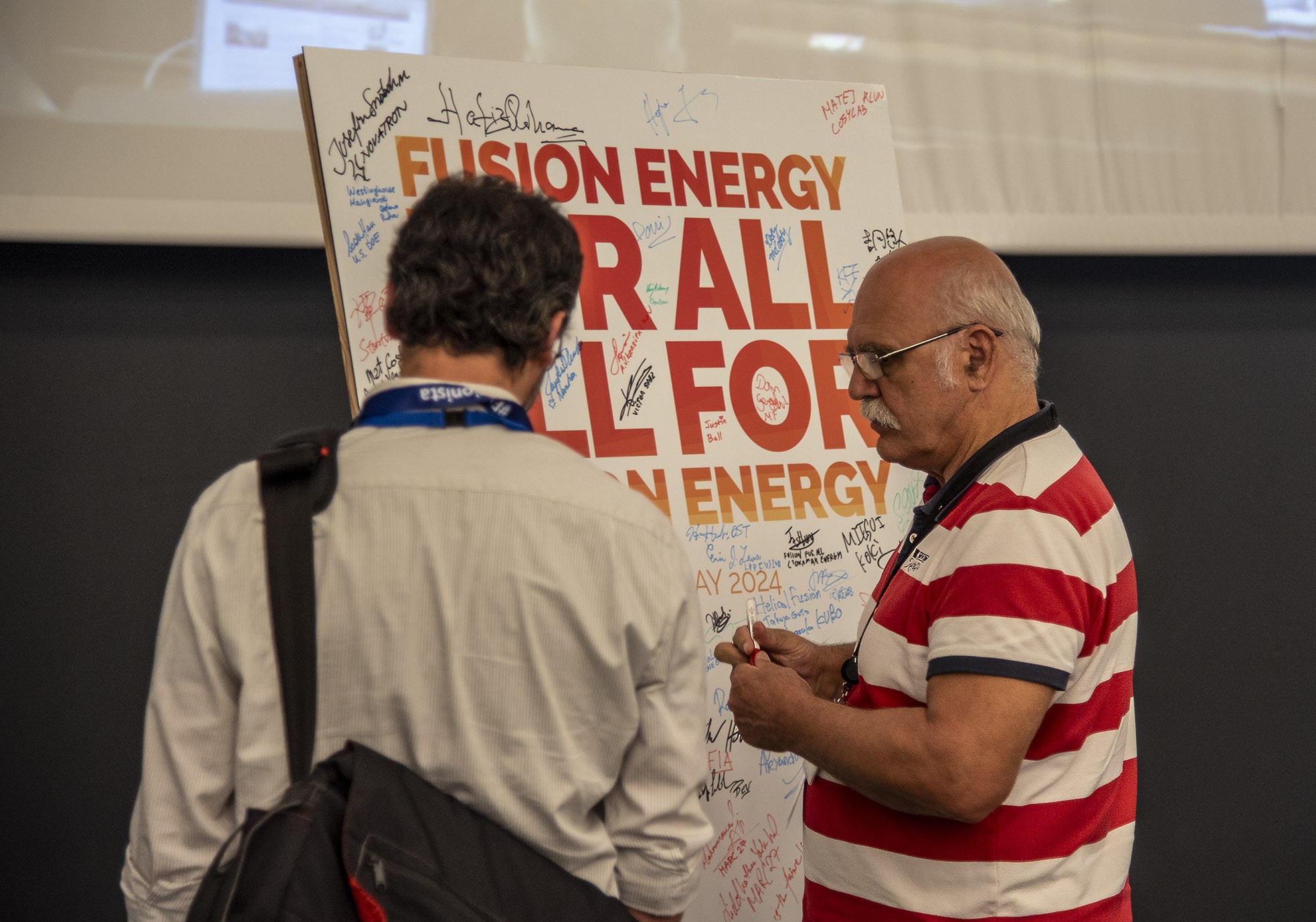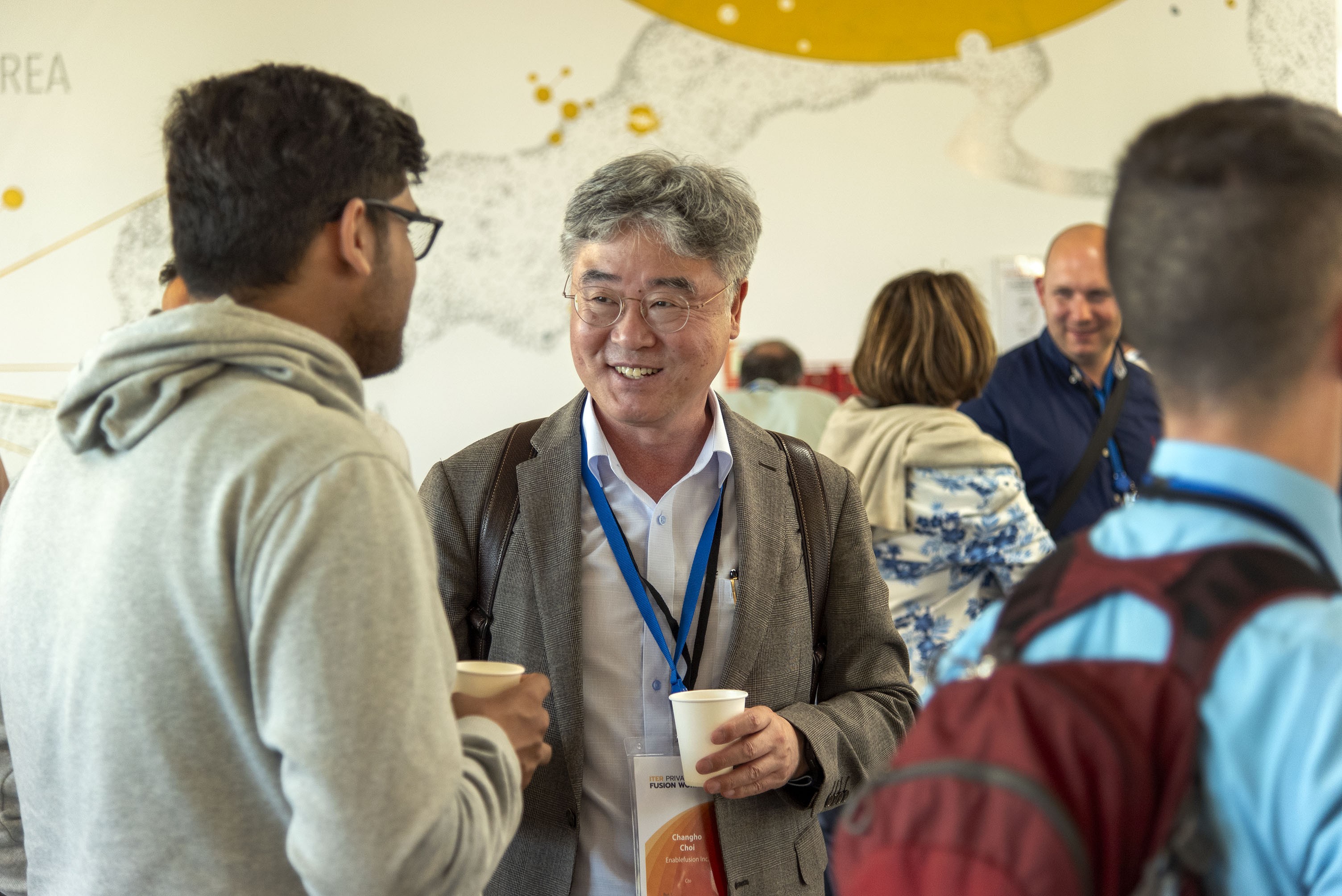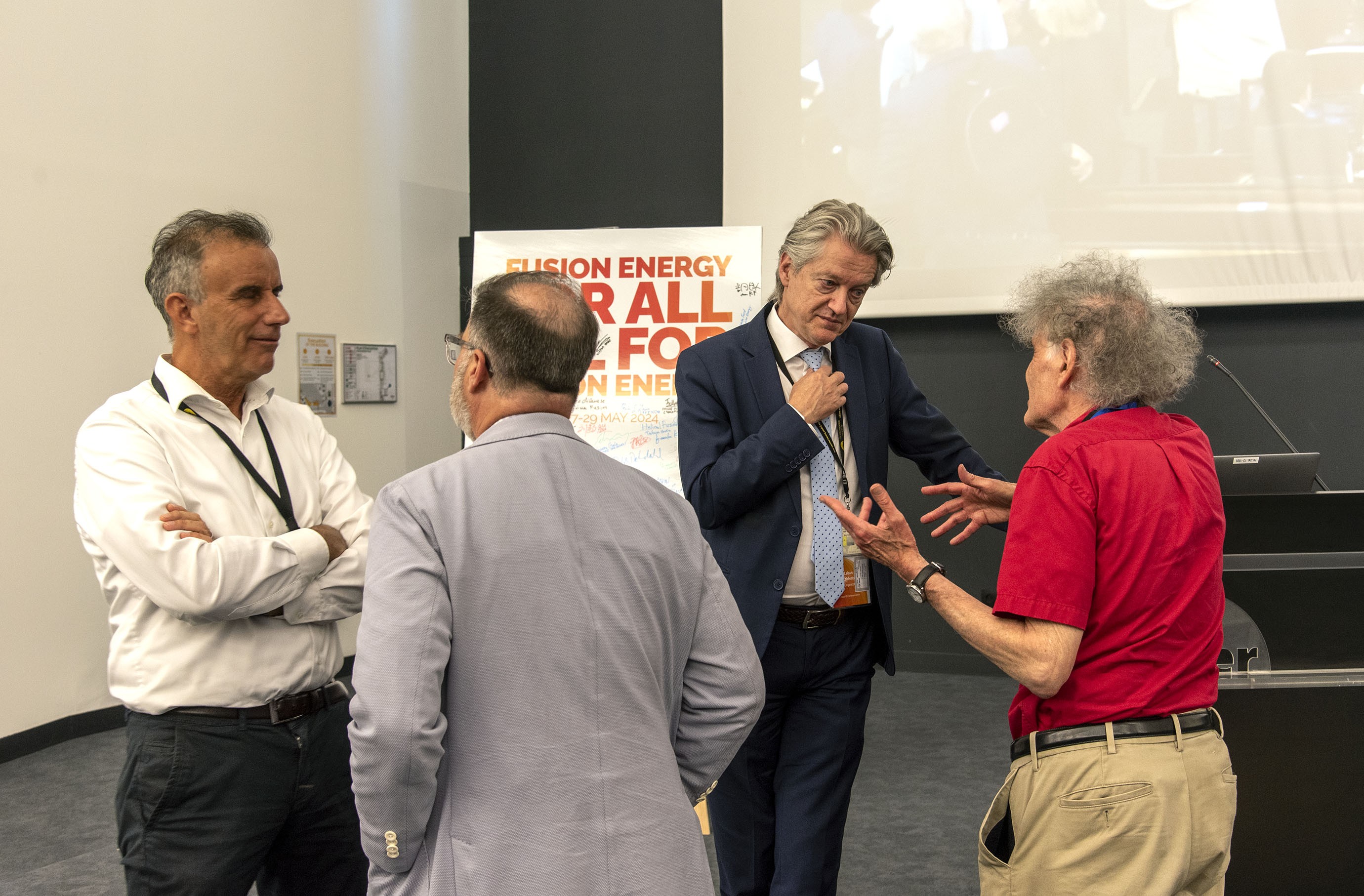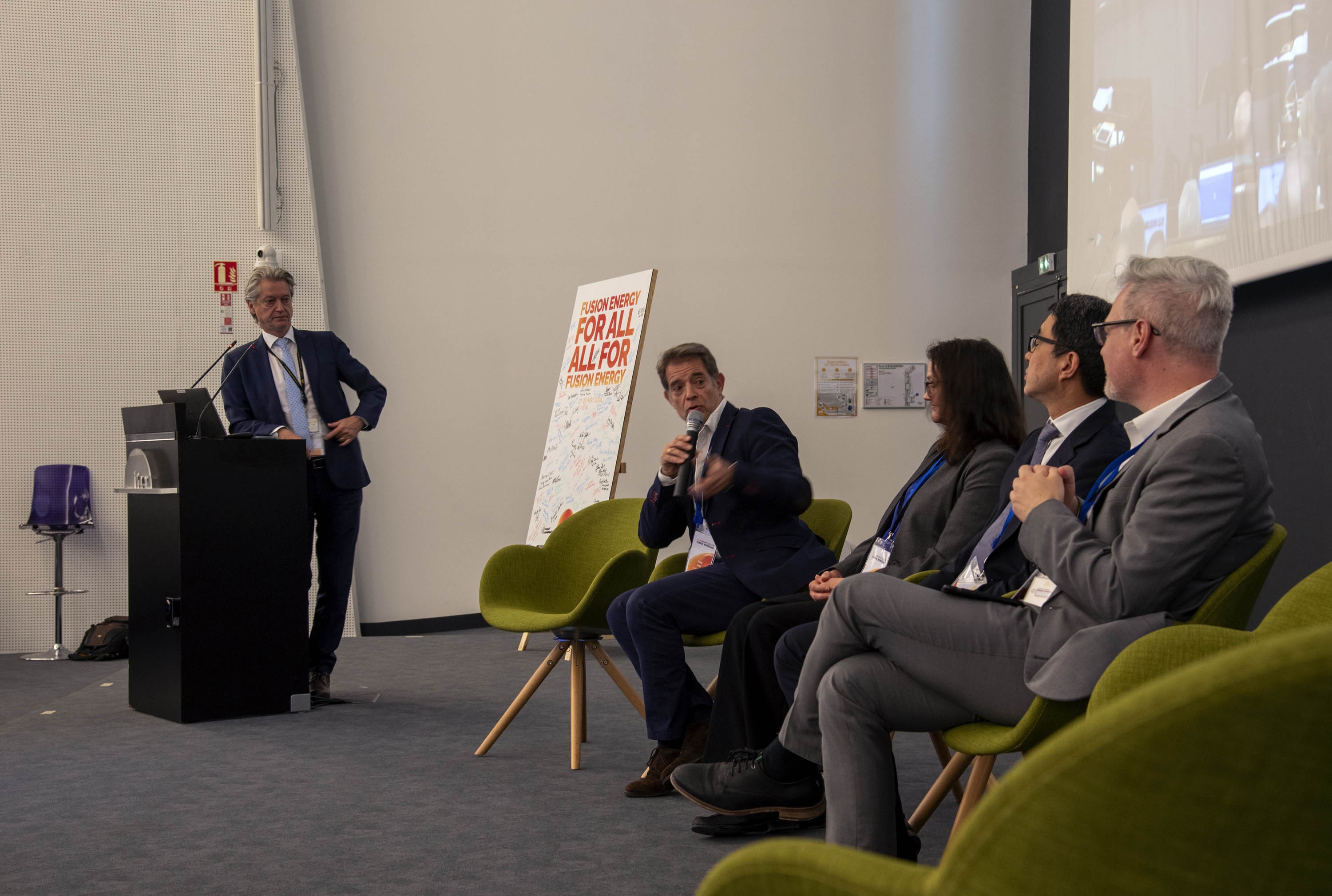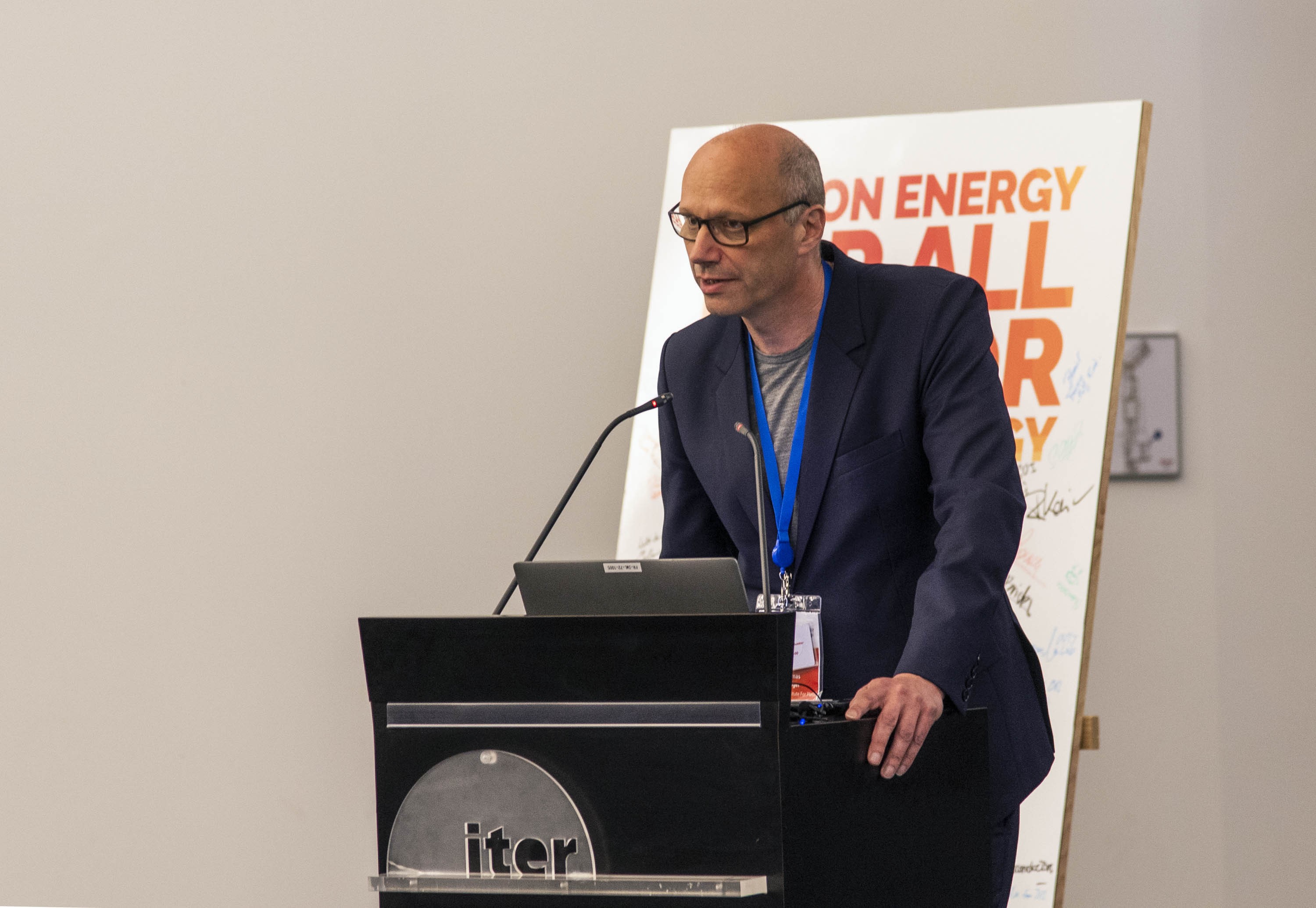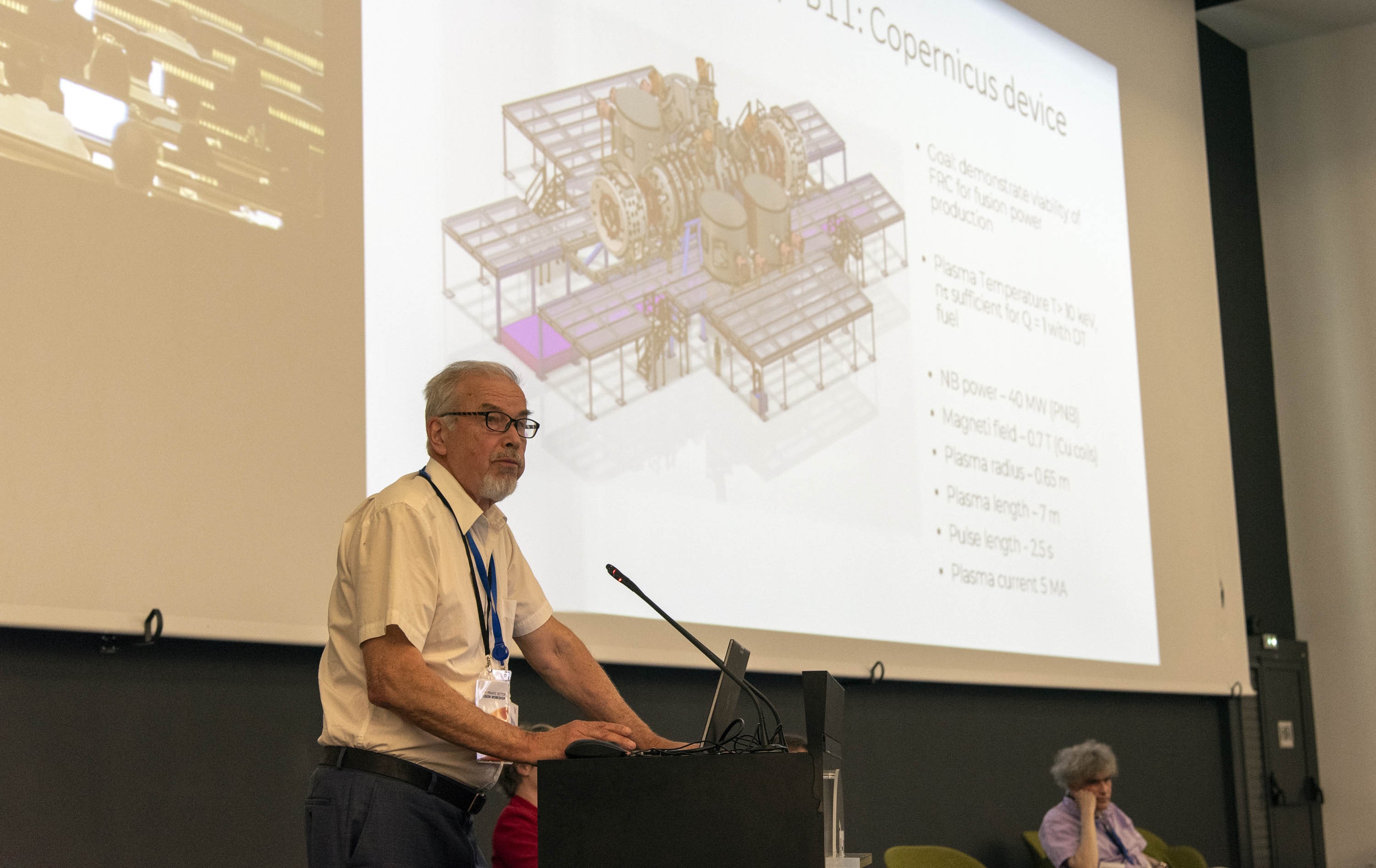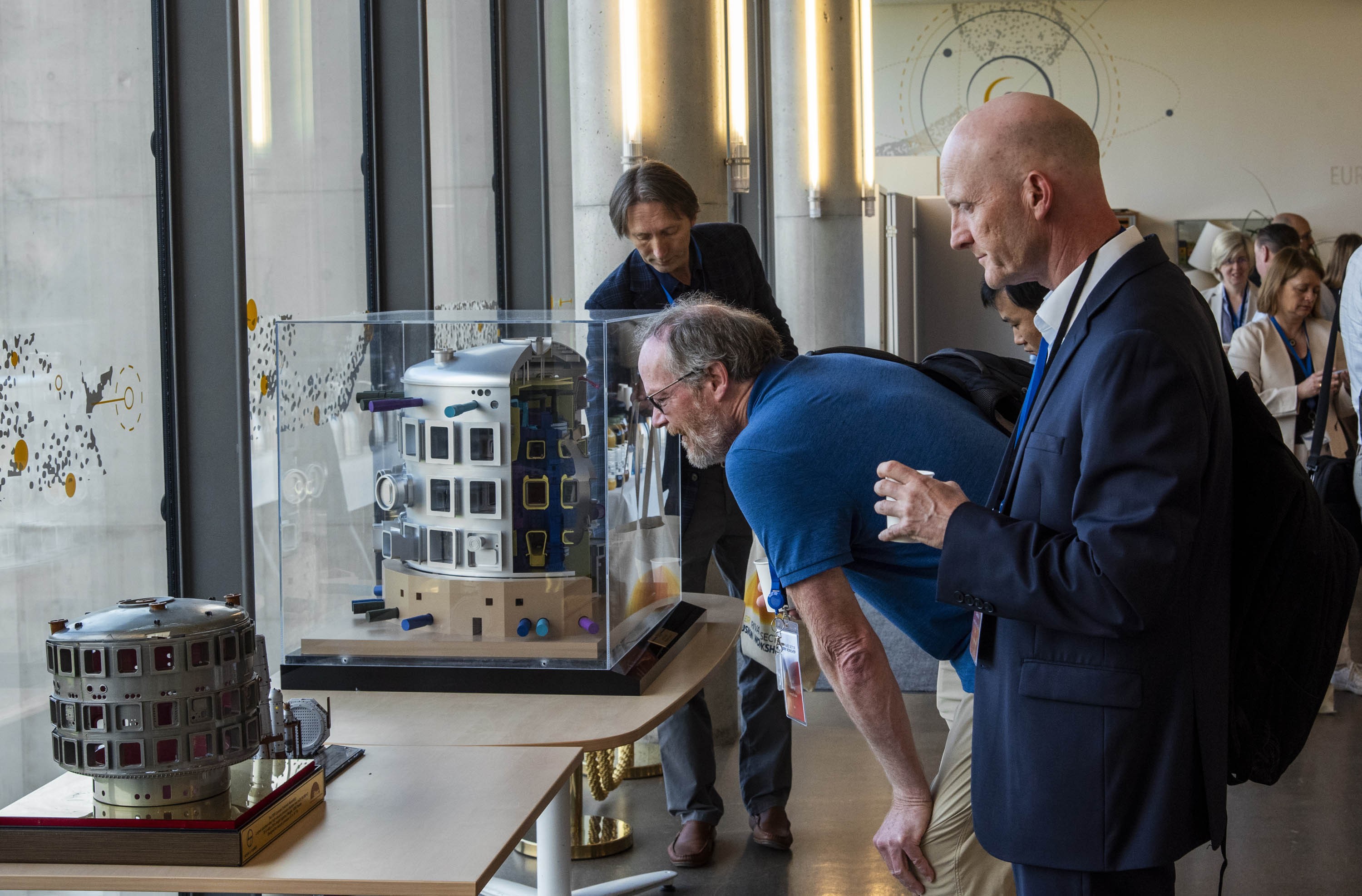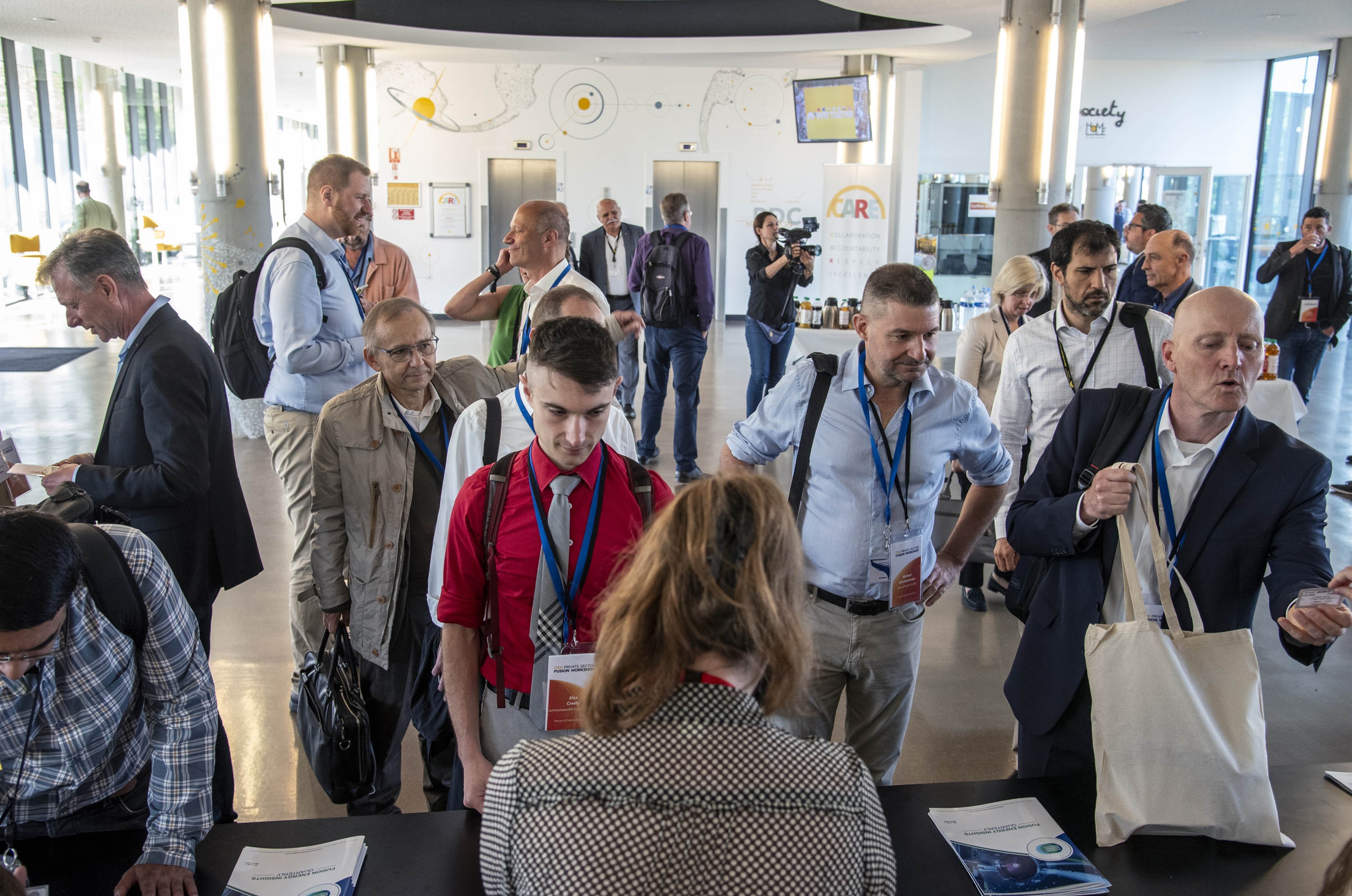« En quoi ITER peut-il vous être utile ? »
On peut envisager de nombreuses approches pour maîtriser l'énergie de fusion. Par exemple en optimisant ou en simplifiant des concepts existants, ou en exhumant des optons abandonnées depuis longtemps pour leur insuffler une vie et une pertinence nouvelles grâce aux progrès de la technologie et à une meilleure compréhension de la physique. Une autre voie consiste à concevoir et construire des dispositifs atypiques, fondés sur des principes et des configurations matérielles totalement inédits. Pour le choix combustible, les stratégies peuvent aussi diverger. Alors que la plupart des dispositifs restent fidèles à la « recette » éprouvée du mélange deutérium-tritium, les deux isotopes lourds de l'hydrogène, d'autres poursuivent le Saint-Graal de la fusion « aneutronique » fondée sur la réaction proton-bore ou hélium-3. Quelle que doit leur approche, les principaux acteurs des différentes entreprises privées engagées dans la fusion ayant vu le jour ces dernières années étaient rassemblés au siège d'ITER, la semaine dernière, pour présenter leurs projets et leurs attentes lors du tout premier atelier ITER-secteur privé. La manifestation a réuni une cinquantaine de dirigeants et de responsables scientifiques de start-ups, ainsi que des fournisseurs, des représentants des laboratoires publics, des agences domestiques d'ITER et d'ITER Organization, soit près de 350 participants déterminés à hâter l'issue d'une aventure qui est probablement la plus ambitieuse et la plus impérieuse de l'histoire de l'humanité.
Il y a 70 ans, confrontés à l'ampleur et à la complexité des défis auxquels ils étaient confrontés, les spécialistes de la fusion, à l'Est comme à l'Ouest, avaient en place une certaine forme de coopération internationale. En 1956, le dirigeant soviétique Nikita Khrouchtchev et le père de la recherche nucléaire soviétique Igor Kourtchatov, s'étaient rendus au centre de recherche sur l'énergie atomique de Harwell, au Royaume-Uni, pour une visite historique qui allait ouvrir la voie à un partage des connaissances et de l'expérience qui, depuis est une des spécificités de la recherche mondiale sur la fusion. Dans une certaine mesure, et malgré les immenses progrès accomplis, la situation actuelle présente des points communs avec celle de cette lointaine époque : deux « systèmes » ou « communautés », le public et le privé cette fois-ci, coexistent aujourd'hui, engagés dans la même quête et confrontés à des problématiques similaires.
À l'heure actuelle, une cinquantaine de start-up privées sont en activité dans une douzaine de pays. Au cours des cinq dernières années, elles ont engrangé plus de 5,5 milliards d'euros d'investissements privés et la plupart d'entre elles ambitionnent de fournir de l'électricité au réseau d'ici la fin des années 2030, ou même avant. Cette allégation peut sembler totalement irréaliste mais la dynamique actuelle ne procède pas de ces échéances. Pour la communauté scientifique mondiale, c'est la nature même des start-ups qui fait leur valeur : elles sont flexibles et audacieuses, s'exposent à des risques limités même lorsqu'elles explorent des pistes peu orthodoxes, et peuvent ouvrir de nouvelles voies dans des directions jusqu'ici négligés.
Pourquoi maintenant ? « Parce que la fusion a atteint une maturité suffisante, a expliqué Andrew Holland, le PDG de la Fusion Industry Association, lors de son intervention devant les participants à l'atelier. Si la fusion est prête aujourd'hui, c'est grâce à 70 années de R&D publique. Les start-up savent qu'elles sont juchées sur les épaules de géants. » Et le premier de ces « géants » est le programme de recherche international ITER, qui a en grande partie réalisé la tâche monumentale consistant à concevoir et à construire l'installation de fusion la plus puissante jamais imaginée et qui assure actuellement son assemblage. Une formidable masse d'expérience a été accumulée tout au long de ce processus initié il y a plusieurs décennies. C'est cette expérience qu'ITER souhaite partager afin d'accélérer la marche vers la maîtrise de la fusion. ITER propose de mettre à la disposition du secteur privé « des informations auxquelles il n'aurait pas accès dans des conférences ou des séminaires, a déclaré son directeur général Pietro Barabaschi. Des informations concernant ce que nous avons fait et les raisons pour lesquelles nous l'avons fait, ainsi que, et c'est peut-être encore plus précieux, ce que nous avons fait mais n'aurions pas dû faire. » Comme le résume le directeur de la communication d'ITER Laban Coblentz, qui a joué un rôle actif dans la genèse et l'organisation de l'atelier : « Cette conférence tourne autour d'un questionnement central : en quoi pouvons-nous être utiles ? ».
Les principales start-up présentes ont répondu à cette question après avoir décrit leur approche, présenté les caractéristiques techniques des dispositifs qu'elles prévoient de construire, décrit les percées techniques attendues et partagé leur calendrier. En tête des souhaits exprimés figuraient l'accessibilité à des codes de modélisation des plasmas tels que SOLPS-ITER et la possibilité de participer à l'ITPA (International Tokamak Physics Activity). Le partage d'informations concernant les systèmes de diagnostics, les propriétés des matériaux et la télémanipulation faisaient aussi partie des principales demandes. Certaines start-up ont proposé de détacher ou d'échanger des personnels, d'autres ont rédigé de longues listes pour demander, entre autres, une assistance pour la conception des éléments face au plasma, des systèmes de chauffage et des aimants, ainsi que la mise en place d'une collaboration dans les domaines de la fourniture et de la réglementation ou encore l'élaboration d'un « narratif commun ».
Les start-up n'étaient pas venues « quémander ». Et ITER n'était ne proposait pas « d'octroyer ». Les entreprises privées et les géants du secteur public (plusieurs grands laboratoires et centres de recherche nationaux ont participé à l'atelier) ont, comme l'exprime David Weisberg, responsable scientifique chez General Atomics, « entamé une conversation » et jeté les bases d'une large collaboration qui servira les intérêts de chacun. « Notre ADN, c'est de soutenir et d'accompagner le développement de la fusion, a rappelé Pietro Barabaschi lors de son discours de clôture. Nous n'avons pas pour ambition de vous coordonner, nous souhaitons plutôt partager notre savoir-faire et, ce qui est peut-être encore plus important, notre 'savoir-ce-qu'il-ne-faut-pas-faire'. Nous ferons de notre mieux pour que vous vous sentiez chez vous au sein d'ITER. »
« La fusion, a ajouté le directeur général d'ITER, a de tout temps progressé grâce à des gens animés par la volonté d'aller vers un monde meilleur ». Ce qui était vrai il y a 70 ans, quand la fusion n'était qu'un rêve, l'est tout autant aujourd'hui, à l'heure où le rêve semble près de se réaliser.
Découvrez des extraits de l'atelier dans cette vidéo ou écoutez l'épisode spécial (en anglais) du Podcast ITER.

